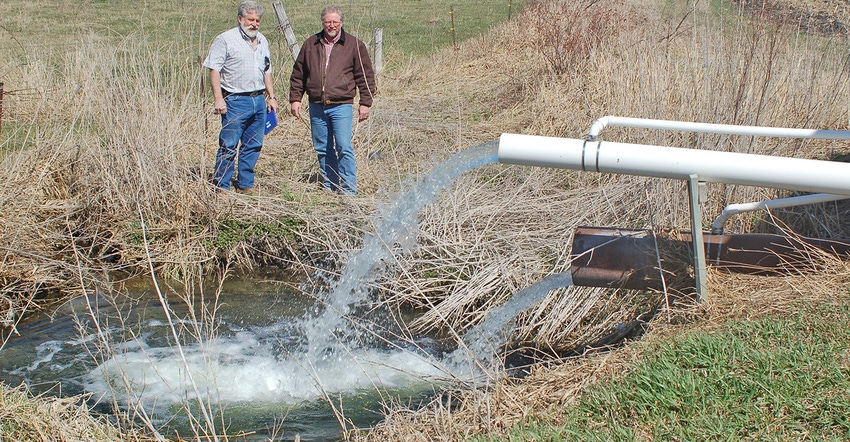February 21, 2017

A long-term water monitoring project reinforces the importance of addressing potential pollution issues in both urban and agricultural landscapes, while also noting that the areas of concern are different between the two.
Based on data collected from 2007 to 2013 in southern Kandiyohi County, Comparison of Contaminant Transport in Agricultural Drainage Water and Urban Stormwater Runoff quantifies and compares sediment, phosphorus and nitrogen losses from both farm fields and urban lands representative of the region.
The paper concludes that management practices in this urban area should be directed to load reduction of ammonium and total suspended solids, while cropland practices should focus on nitrate. Phosphorus was identified as a management priority for both.
Given the extent to which urban areas continue to grow while cropland area shrinks, this information serves as a helpful reminder that barring some dramatic new breakthrough in technology or engineering, water quality efforts need to account for impacts due to both agricultural and urban development. Improvements in water quality really do depend on all of us.
For the study period, total volume of runoff from the urban area was about 1.5 times that of cropland on a per-acre basis. Sediment contained in runoff from the urban area was nearly 12 times higher than from cropland, while phosphorus loads were about 2.2 times higher on a per-acre basis. Cumulative loads of ammonia-N during the study period were 10 times higher from urban areas. Conversely, nitrate loads were 12.4 times higher from cropland than urban areas.
Caution must be exercised in scaling up the results, or applying them to other watersheds that may have different soil types or land-use conditions. Monitoring also showed large differences from year to year, primarily due to differing precipitation patterns. In general, runoff occurred more frequently from the urban area due to more impervious surface area, though the difference between urban and ag land tended to decrease at higher precipitation levels.
The study also included a field area to which no fertilizer was applied during the study period. A comparison of nutrient and sediment losses from the fertilized and unfertilized fields shows higher nitrogen losses, but lower phosphorus and sediment losses, from the fertilized field.
Readers may be surprised to note that the ratio of cropland to urban area in the studied watershed is 4.6:1, much lower than often presumed. For comparison, the ratio of cropland to urban area across all of Minnesota is 5.8:1.
The report was published in the December 2016 edition of PLOS One, a multidisciplinary research journal, providing useful context for water quality discussions. See the full article at http://bit.ly/2hF3YhS.
This research was funded primarily from grants from the Minnesota Corn, Soybean and Turkey Research and Promotion councils, with additional support from the University of Minnesota.
Formo is executive director with the Minnesota Agricultural Water Resource Center.
About the Author(s)
You May Also Like






